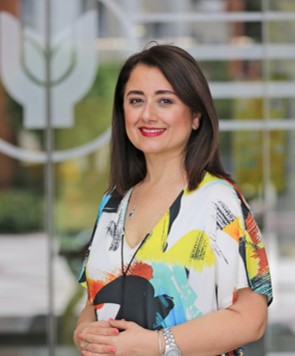The feminization and misrepresentation of PR practitioners
by Assoc. Prof. Özlem Alikılıç
Yaşar Üniversitesi, Turkey
From the article The feminization and misrepresentation
of public relations practitioners in Turkish tv dramas
When considering female practitioners’ representations in media (Don Bates 1983; Jack Bernstein 1986; Linda Aldoory and Elizabeth L. Toth 2001; Romy Fröclich and Sonja B. Peters 2007; Pompper and Jung 2013) PR seems to be notably dominated by female professionals. Interestingly, females are usually portrayed neutrally or negatively in media representations. Although an increasing number of studies (James E. Grunig, Elizabeth L. Toth and Linda Childers Hon 2000; Fröchlich and Peters 2007; Raven Everidge 2010; Verlee 2012) have concluded that positive and neutral portrayals began to outnumber the negative ones, the present study confirms the idea that PR profession is represented in a negative way in the Turkish media. Until now, no studies have been conducted on how Turkish media framed and portrayed PR professionals.
Turkish TV dramas have become extremely popular in the last two decades, and PR practitioners are represented in these dramas. However, there are some worrying issues with these representations. An important observation in TV dramas was the high rate of feminization of the profession. In addition, women PR practitioners were depicted in scenes of misconduct. Some of the common female stereotypes were the “spin doctor”, “PR bunny”, and the “chick world”, which emphasizes the dominance of gender in the profession (Alex Wadlow 2008). As Jonathan Cohen and Gabriel Weimann (2000) noted, strong exposure to TV’s recreated reality can lead to false perceptions of reality; media representations may be people’s only source of information about their environment and culture, and perhaps about professions. Data on media consumption in Turkey presented by the Turkish State Statistics Organization (TÜİK) show that 77% of the population watches TV (TÜİK 2018).
Based on the theories of media representation studies, this study addresses the following research questions regarding the feminization of PR practitioners and their media representations: (RQ1) How do Turkey’s mainstream media represent PR practitioners through TV dramas? (RQ2) What types of gender portrayals are made salient? (RQ3) How are they framed? To answer the research questions, this study uses qualitative framing analysis to explore the media representation of PR practitioners that have appeared in TV dramas. Findings are:
Gender
PR profession is represented by women via TV dramas. Among the 55 PR practitioners which were analysed in this study were female (95%, N= 52) and 3 practitioners (N= 3) were male. But perhaps that is the most interesting part of the results, because they were all represented as gay. It is quite challenging that even though the profession is feminized, few male characters are represented as “gay”.
Lookism
Appearance is important. The fact that appearance, i.e. being beautiful, slim, young is of primary importance is predominantly emphasized.
Ageism
The present findings showed that the ages of the PR practitioners are always young.
Archetypes in portrayals of PR practitioners
Following Miller’s (1999) and Saltzman’s (2012) definitions, 41 characters (74.5%) were coded as manipulative and 41 as cynical. This research also shows that among 55 characters, 40 characters (72.7%) were coded as the “using sex” archetype. These characters seduced men to achieve their goals (for both personal and corporate goals). Unfortunately, the one and only positive archetype “accomplished” was the least frequent (N=16, 29.1%) type that was found.
The roles
It has been observed that PR profession in Turkish dramas is represented by rather colourful, entertaining and glamorous parties, receptions, openings and meetings. It is observed that the functions such as crisis communication, social responsibility, government relations and lobbying which predominantly bear strategic and management skills are not presented
Trivialization of PR profession in Turkish dramas
The PR practitioners in the dramas are displayed in unacceptable conducts -with respect to professional ethics and occupational practices- and while abusing their duties as they execute their professions.
Presentation of PR practitioners as reprobate females
The evil woman characters in the dramas working as PR practitioners, wearing indecent and flashy clothes, seducing married men, establishing intimate unprofessional relations with media employees, manipulating media easily and lying freely to the public and their environment.
Read the full article
The feminization and misrepresentation of
public relations practitioners in Turkish tv dramas
References
Aldoory, Linda, and Eizabeth Lance Toth. 2001. “Two Feminists, Six Opinions: The Complexities of Feminism in Communication Scholarship Today.” In Communication Yearbook, edited by W. B.
Cohen, Jonathan, and Gabriel Weimann. 2000. “Cultivation Revisited: Some Genres Have Some Effects on Some Viewers.” Communication Reports 13 (2): 99–114. doi:10.1080/08934210009367728.
Gudykunst, 345–361. Newbury Park, CA: Sage.
Bates, Don. 1983. “A Concern: Will Women Inherit the Profession?” The Public Relations Journal 39 (7): 6-8.
Bernstein, Jack. 1986. “Is PR Field Being Hurt By Too Many Women?” Advertising Age 57 (7): 66-67.
Everidge, Raven. 2010. “The Portrayal of Public Relations Practitioners: A Content Analysis of Television and Film”. PhD. Thesis. Accessed 30 March 2019. https://etd.auburn.edu/bitstream/handle/10415/2197/RavenLEveridgeMAThesisPDF.pdf?sequence=2&ts=1442057908018
Fröhlich, Romy, and Sonja B. Peters. 2007. “PR Bunnies Caught in the Agency Ghetto? Gender Stereotypes, Organisational Factors, and Women’s Careers in PR Agencies.” Journal of Public Relations Research 19 (3): 229- 254. doi:10.1080/10627260701331754.
Grunig, Larissa A., Elizabeth L. Toth, and Linda Childers Hon. 2001. Women in Public Relations: How Gender Influences Practice. New York, NY: Guilford Press.
Miller, Karen S. 1999. “Public Relations in Film and Fiction: 1930 to 1995”. Journal of Public Relations Research 11(1): 3-28. doi:10.1207/s1532754xjprr1101_01.
Pompper, Donnalyn and Taejin Jung. 2013. “Outnumbered Yet Still on Top, But for How Long?’ Theorizing About Men Working in the Feminized Field of Public Relations.” Public Relations Review 39 (5): 497-506. doi:10.1016/j.pubrev.2013.08.007.
Saltzman, Joe. 2012. “The Image of the Public Relations Practitioner in Movies and Television, 1901–2011.” The Image of the Journalist in Popular Culture 3: 1-50.
Verlee, Elena. 2012. “Break Free from PR Stereotypes. PR in Your Pajamas.” Accessed January 29 2019. https://prinyourpajamas.com/break-free-from-pr-stereotypes/
Wadlow, Alex. 2008. “PR Bunnies or Natural Born Communicators. Behind the Spin.” Accessed January 29 2019. http://www.behindthespin.com/careers/pr-bunnies-or-natural-born-communicators.
 info@euprera.org
info@euprera.org
 Facebook
Facebook YouTube
YouTube

